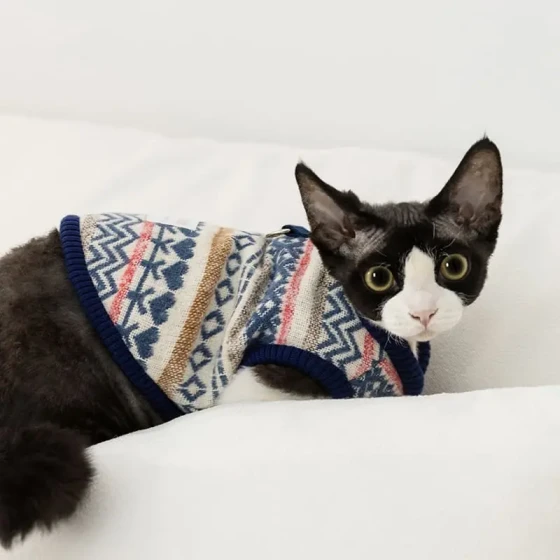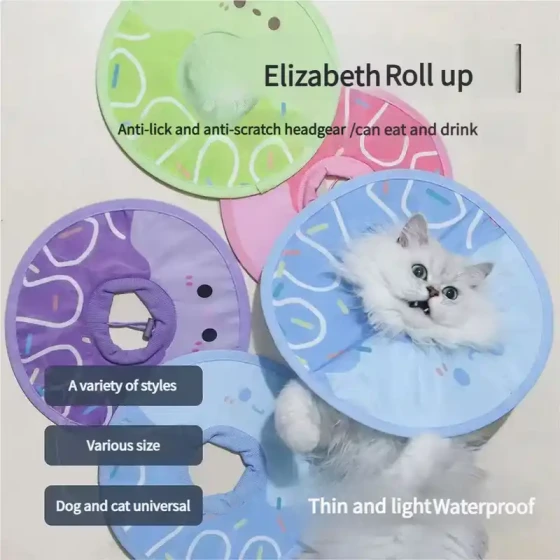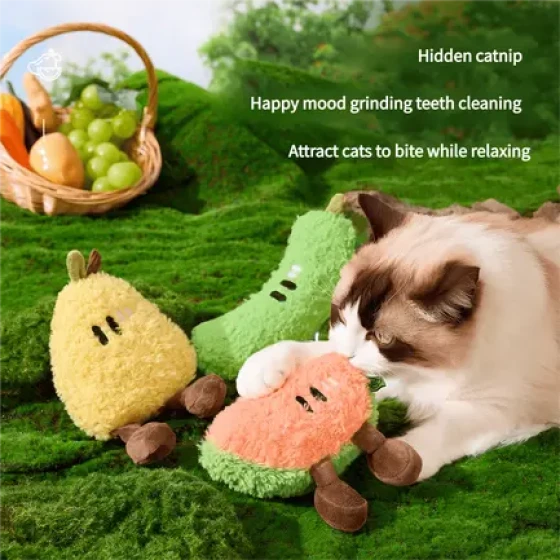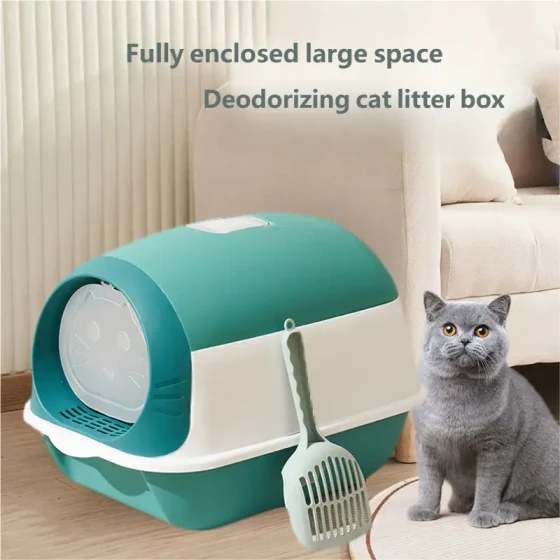What Are the Symptoms of Cats in Heat_Detailed Explanation of Heat Period Behaviors
Having raised cats for many years, you will inevitably encounter moments that puzzle or frustrate you. Among them, cats in heat definitely rank high, especially for novice cat owners. That usually aloof, elegant master who only spares a glance when needed suddenly becomes... strange. Loud yowling, rolling on the floor, even attempts to escape—the behaviors will make you question feline life, and even wonder if you are raising a fake cat.
This is actually a completely normal physiological stage in a cat’s life—the heat period. Understanding it will not only prevent you from feeling confused by your cat’s “crazy” behavior but also help you better cope with and care for your furry child. After all, knowing what and why are equally important.
Cats, especially female cats, enter heat after sexual maturity. This is a hormone-driven natural process aimed at attracting the opposite sex for reproduction. Unlike humans or dogs, cats have a unique estrus cycle; they are seasonally polyestrous animals, more likely to come into heat when daylight increases (such as from spring to autumn). Simply put, their reproductive system is largely “conducted” by sunlight.
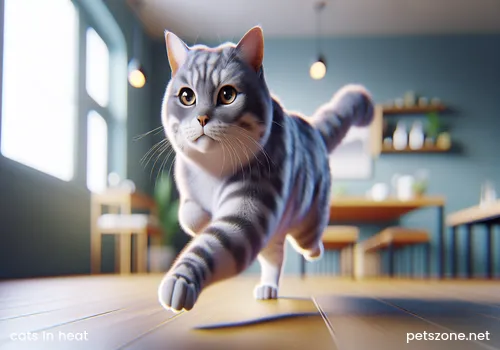
So, when your cat enters this hormone-led “life drama,” what symptoms will it show? This is not just a few meows but a series of complex and often very noticeable behavioral changes:
1. Hoarse and Exhausting “Calls”: Soul-Shattering Cat Howls
This is one of the most common and most frustrating symptoms for cat owners. A female cat in heat will produce calls completely different from usual, usually a low, prolonged howl that sounds somewhat painful or restless. Some describe it as a baby crying or moaning in pain. The purpose of this call is simple: to announce to the world, “I am ready!” It persists relentlessly, day and night, sometimes making you suspect there is a “cat-shaped perpetual motion machine” next door.
- Underlying logic: This is how cats attract mates in the wild. In vast environments, this high-frequency, penetrating call attracts distant males. In a home environment, they retain this instinct, but the recipients are you and possibly neighbors.
2. Exaggerated Body Language: “Yoga” on the Floor and Rubbing
Besides vocalization, a cat’s body language changes drastically:
- Crazy rolling: They will roll and twist incessantly on the floor, carpet, or any flat surface, like performing painful yoga. This is not discomfort but the release of excitement and anxiety caused by internal hormones.
- Rubbing around: Cats rub various body parts (cheeks, side of the body, base of the tail) against furniture, corners, your legs, or even the air. This is a marking behavior, leaving scent to attract potential mates and possibly seeking comfort.
- Raised hips (arched spine): When you stroke the area near their tail on their back, they naturally lift their hips, swing the tail to one side, and their hind legs might make kneading motions. This is a typical “lordosis” posture, showing readiness for mating. In intense heat, they might hold this posture even without touch.
- Underlying logic: These behaviors increase chances of being found and recognized by male cats. Rolling and rubbing spread scent, and raised hips are a direct sexual acceptance signal. In the wild, these are key survival and reproductive strategies.
3. Personality Changes: From Aloof to Clingy or Agitated
Some cats become unusually clingy during heat, constantly following you, seeking petting and attention (especially on their back and tail base), even headbutting and winding around you. Others become restless, difficult to sleep, lose appetite, and lose interest in toys or interaction, remaining anxious all day.
- Underlying logic: Dramatic hormonal fluctuations affect a cat’s mood and behavior. Seeking attention may express internal discomfort or urges, while agitation is common when physiological drives are unmet.
4. Other Less Obvious Signs:
- Loss of appetite: Cats may reduce food intake or stop eating altogether due to focus on heat.
- Frequent licking of genital area: Normal grooming behavior but more frequent during heat.
- Escape attempts: Female cats in heat exhibit a strong desire to go out to find mates. This is very dangerous; please watch doors and windows carefully!
- (Rarely) inappropriate urination marking: Though less common than males, females may mark with urine during heat to attract males or express anxiety.
Male Cats’ “Response”:
Although the title primarily asks about symptoms of cats in heat (implying females), it’s worth mentioning that male cats do not have a strict “heat” period. Their sexual drive is mainly triggered by the scent and calls of females in heat. When a female in heat is nearby, unneutered males become unusually active, loud, experience decreased appetite, irritability, and may attempt all possible ways to go outside to find females, even fighting other males for mating rights. So if your male cat suddenly “changes temperament,” it is likely he smells a female in heat nearby.
Heat Cycle and Duration:
A cat’s heat usually lasts 4-7 days. If no mating occurs, they will come into heat again after a variable interval (weeks to months, depending on light and individual differences). This repeated heat cycle continues throughout the breeding season until daylight shortens (winter entering anestrus) or pregnancy occurs. Repeated heats are very physically and mentally exhausting for cats and a significant stress source.
Understanding Heat, Then What?
By now, you might think, oh dear, this sounds torturous! Yes, for both the cat and you. From the cat’s perspective, a powerful internal physiological urge remains unmet, and constant calling and behavioral changes are instinctive responses to this signal, making this a stressful and frustrating process.
Therefore, for household cats not intended for breeding, spaying/neutering is usually the best and most responsible solution to heat problems. The surgery permanently removes sex hormone-producing organs (ovaries in females, testes in males), completely stopping heat behavior and reducing health risks caused by heat (such as pyometra, mammary tumors in females) and behavioral problems (calling, marking, escape attempts, male fighting). This significantly improves cats’ quality of life, giving them a calmer, healthier, less stressful life and fosters a more harmonious relationship between you and your cat.
Of course, if for various reasons you cannot spay/neuter immediately, during heat please be sure to:
- Close doors and windows: This is vital to prevent loss or unintended pregnancy.
- Provide a comfortable environment: Offer warm, secluded places for your cat to rest, even if they find it hard to relax.
- Distract attention: Try toys, treats, or interactive games to divert their focus, though effects may be limited.
- Be patient: Understand this is their physiological instinct; do not scold or punish them for it.
Heat is a natural call of life for cats. Understanding and properly managing this stage reflects our responsibility and care as pet owners. Instead of letting them repeatedly suffer physiological and psychological distress, use scientific approaches to allow them to live a more relaxed and happier life within the special environment of home. After all, they are our family, and home should be filled with understanding and peace, shouldn’t it?
